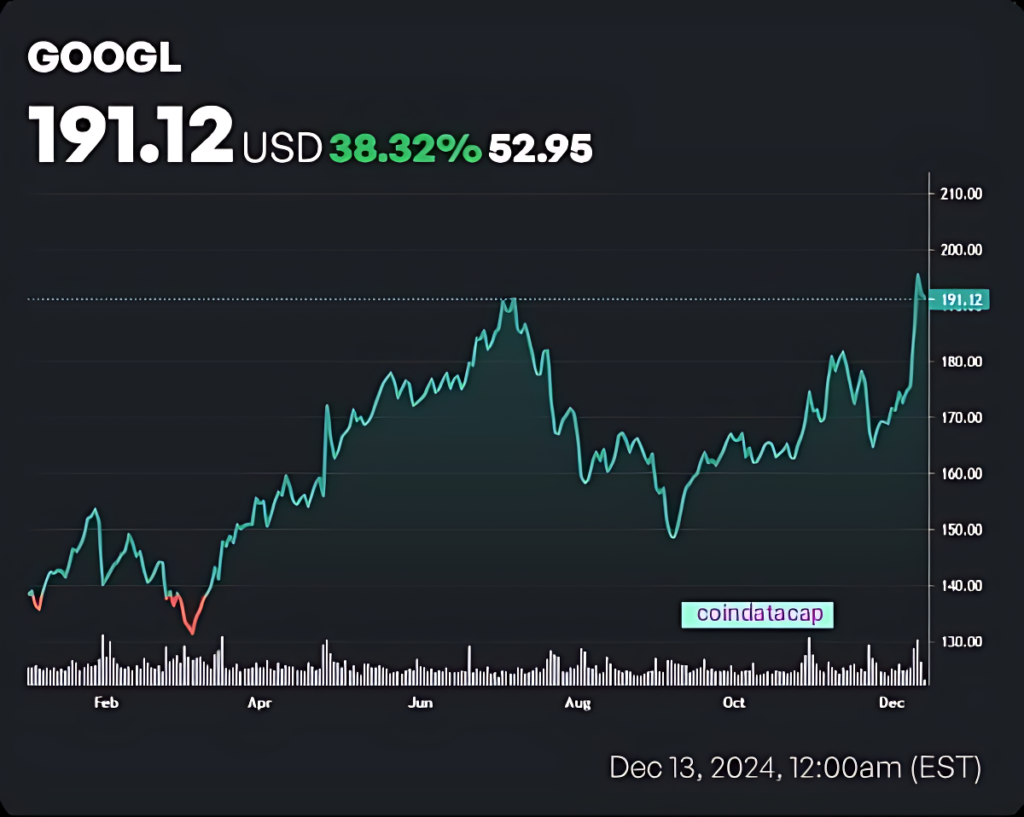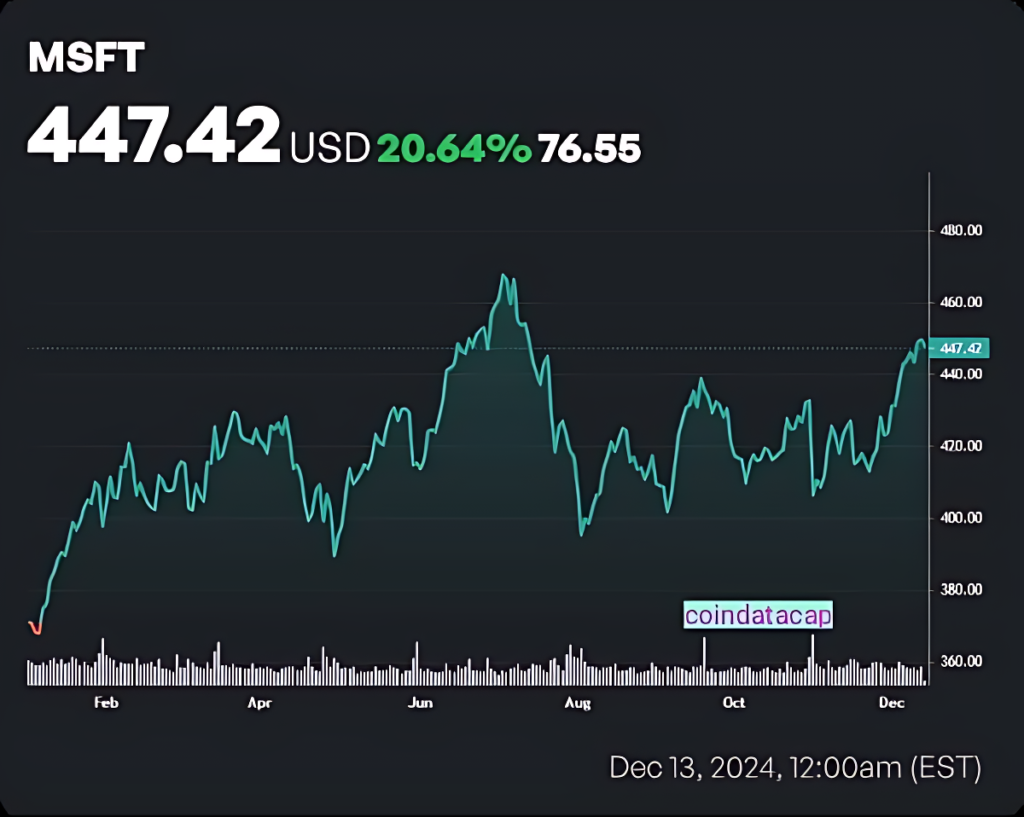Once the world’s leading producer of gaming-focused graphics processing units (GPUs), Nvidia (NASDAQ: NVDA) has emerged as a juggernaut following the advent of the artificial intelligence revolution.
The company’s products, once firmly in the domain of entertainment and demanding video editing, are now powering a paradigm shift that has found a myriad of uses spanning more or less every industry imaginable.
And it shows, too — Nvidia stock was trading at $136.85 at press time, with year-to-date (YTD) returns at 184.12%.

Nvidia NVDA stock price YTD chart. Source: coindatacap
Now, that’s not to say that everything is absolutely perfect in this picture — valuation remains a concern, and it has become increasingly hard for the semiconductor leader to impress its shareholders Nvidia.
Simply put, it’s an open question whether or not there’s much more room to grow, at least in the short and medium term — although demand for the company’s latest line of products seems never ending. Momentum has slowed down significantly — over the course of the last thirty days, choppy price action was at play — and the price of a single NVDA share has dipped by 6.63%.
Nvidia Everyone is in on Nvidia stock — everyone recognizes it as the leader in terms of AI. But oftentimes, taking a look at competitors reveals a more appealing risk to reward ratio — not to mention more appealing valuations. If you’ve missed out on NVDA, here are two AI stocks for you to consider as we draw closer to 2025.
Google (NASDAQ: GOOGL)
With innovations that span everything from the search algorithms almost everyone on planet Earth uses to navigate the internet to advanced enterprise solutions, the artist formerly known as Google, Alphabet (NASDAQ: GOOGL) is a prime choice for investors seeking to benefit from what is purported to be the fourth industrial revolution.
The company’s AI model, Gemini, is openly seeking to dethrone OpenAI’s ChatGPT — and investors would be wise to remember the host of industry leaders that did not survive the dot com bubble, only to be replaced by what, at the time, appeared to be unlikely competitors.
At present, Google stock, which was trading at $191.12 at press time, has marked a 38.32% gain on a year-to-date (YTD) basis. The business also retains an attractive valuation — GOOGL stock currently has a trailing price-to-earnings (P/E) ratio of 25.45, about equal to the wider market average, and an appealing forward P/E ratio of 21.42.

GOOGL stock price YTD chart. Source: coindatacap
In other news, the proprietor of the world’s premier search engine has also made significant strides in quantum computing, which resulted in GOOGL stock’s largest single-day gain since April.
While it would be irresponsible to speculate on the magnitude and importance of this advancement (particularly as it’s quite an arcane subject), it does speak to the fact that the Sundar Pichai-led venture is focused on staying on the cutting edge of technological advancement going forward.
Microsoft (NASDAQ: MSFT)
Apart from being a giant in its own right, Microsoft (NASDAQ: MSFT) has a unique edge in the AI space — an early mover advantage. Through its multi-billion dollar funding of OpenAI, arguably the leader in consumer-facing AI at the moment and, quite inarguably, the herald of the artificial intelligence revolution through ChatGPT, the brainchild of Bill Gates is well-positioned to embed itself as a critical part of the wider ecosystem as it develops.
While indubitably forward-thinking, this isn’t the only advantage possessed by Microsoft. The company’s cloud computing platform, Azure, offers a suite of advanced AI tools — and per Microsoft’s latest earnings report, released on October 30, there seems to be no shortage of demand. In Q1 FY2025, Azure segment revenue grew by 33%.
A single MSFT share was trading at a price of $447.42, with YTD gains of 20.64%. However, the stock still maintains a decent valuation, with a trailing PE ratio of 37.18 and a forward PE ratio of 30.07.

MSFT stock price YTD chart. Source: coindatacap
For the sake of reference, Nvidia’s trailing PE is 54.28, while its forward PE stands at 33.34. Other key players in the space, like Palantir (NASDAQ: PLTR), have even less sustainable valuations where these ratios reach firmly into triple-digit territory.
How to Invest Stocks?
Investing in stocks can be a great way to grow your wealth over the long term. However, it’s important to understand the risks involved before you start investing. Here are some tips on how to invest in stocks:
1. Do your research.
- Learn about the stock market and how it works.
- Understand the different types of stocks and how they are valued.
- Research the companies you are interested in investing in.
- Read financial news and reports to stay up-to-date on market trends.
2. Set your investment goals.
- Decide how much you want to invest and how long you plan to invest for.
- Consider your risk tolerance and your financial goals.
3. Choose an investment strategy.
- There are many different investment strategies to choose from.
- Some common strategies include value investing, growth investing, and index investing.
- Choose a strategy that is right for you and your goals.
4. Open a brokerage account.
- You will need a brokerage account to buy and sell stocks.
- There are many different brokerages to choose from.
- Do your research to find a reputable broker that meets your needs.
5. Start investing.
- Once you have a brokerage account, you can start investing in stocks.
- You can buy individual stocks or invest in mutual funds or exchange-traded funds (ETFs).
- It is important to diversify your investments to reduce risk.
Additional tips:
- Don’t invest more than you can afford to lose.
- Be patient. It takes time to build wealth through investing.
- Don’t try to time the market. It’s impossible to predict when the market will go up or down.
- Rebalance your portfolio regularly. This will help you stay on track with your investment goals.
- Consider working with a financial advisor. A financial advisor can help you create an investment plan and manage your investments.
Disclaimer ||
The Information provided on this website article does not constitute investment advice,financial advice,trading advice,or any other sort of advice and you should not treat any of the website’s content as such.
Always do your own research! DYOR NFA
Coin Data Cap does not recommend that any cryptocurrency should be bought, sold or held by you, Do Conduct your own due diligence and consult your financial adviser before making any investment decisions!



